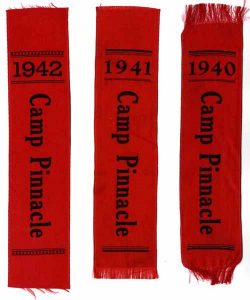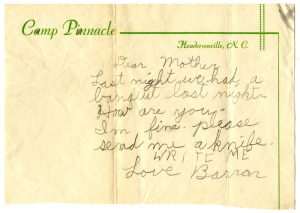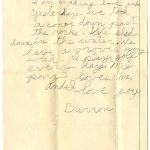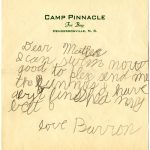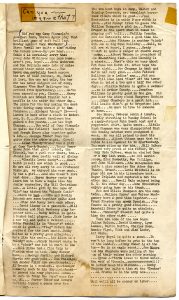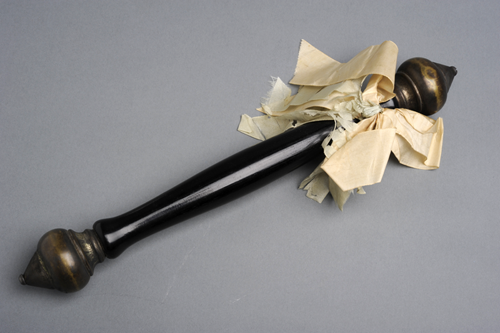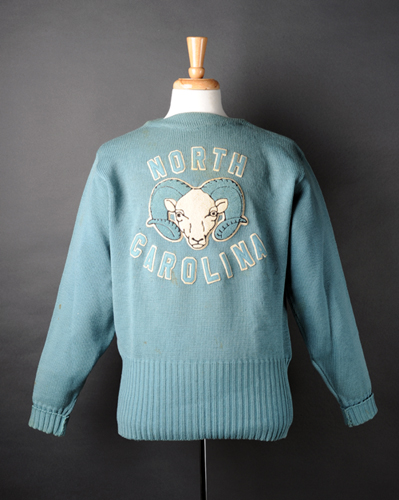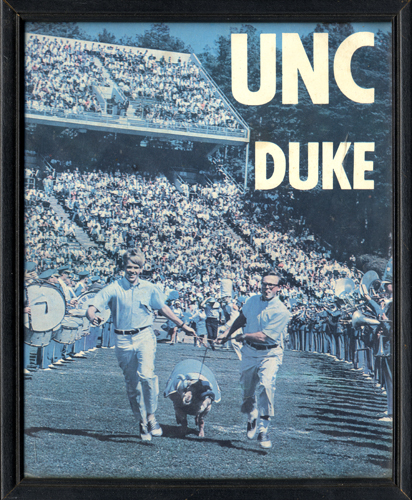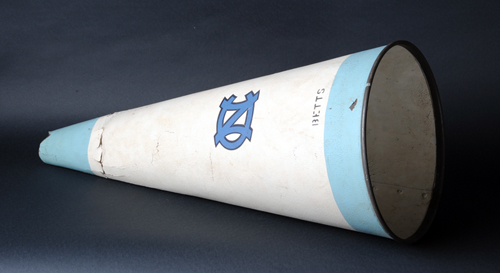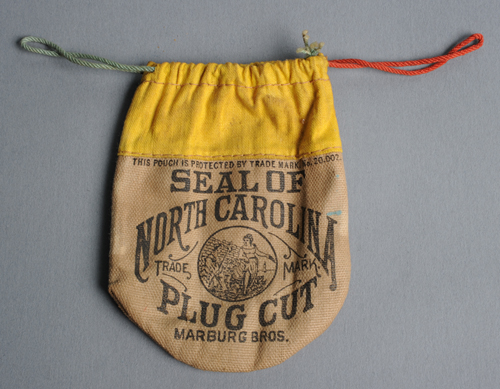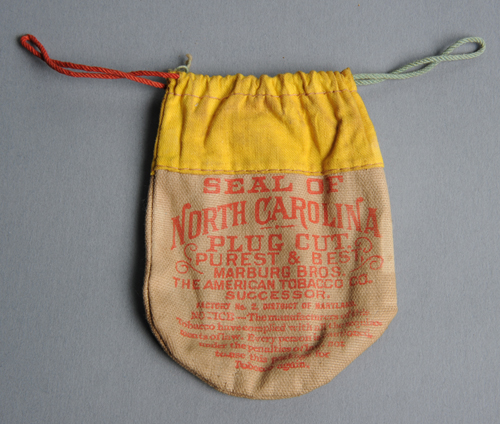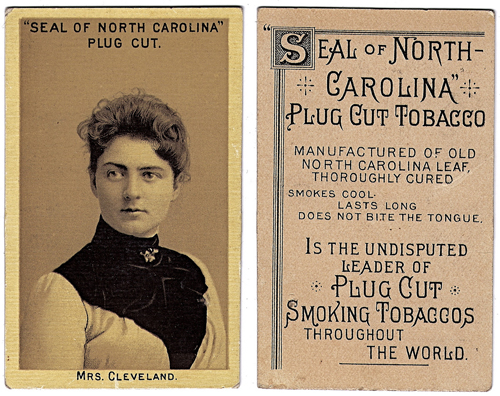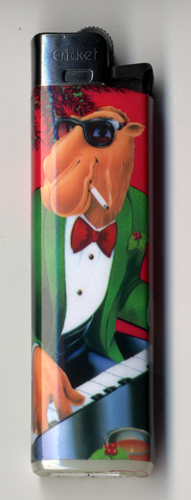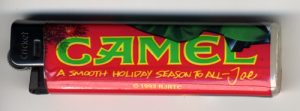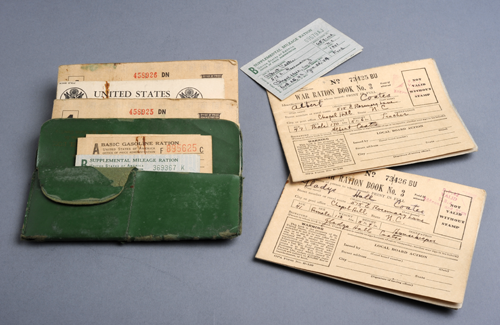If the arrival of hot, sticky weather has you reminiscing about your days at summer camp, our June Artifacts of the Month are here to feed your nostalgia.
This set of items from Camp Pinnacle in Hendersonville was skillfully acquired at a flea market by valued donor and NC Miscellany contributor Lew Powell. It includes a Camp Pinnacle newsletter, three letters home from a camp-goer named Barron, and three camp ribbons, dated 1940 to 1942.
In one letter to his mom, Barron offers a few polite introductory sentences and then gets to his real point:
Dear Mother
Last night we had a banquet last night. How are you. I am fine. Please send me a knife. Write me.
Love Barron
The newsletter, “Pinnacle Pep,” tells of horse shows and swim meets, girls at neighboring camps, and the camp orchestra.
But while these American boys were making belts, learning to swim, and begging their moms to send them the funnies, their slightly older countrymen were fighting in a world war half a world away. Even amidst the summer revelry, that conflict looms in the background, as evidenced by the last page of “Pinnacle Pep.” It’s a news-brief-style rundown of all the Pinnacle happenings, with the header “Can you imagine that?”
We can only guess at what most of these sentences mean (“‘Smoochy’ Stewart had quite a time the other night…”)
But some are crystal clear, including this brief excerpt:

And this one, which wraps up the camp news with an ominous prediction:

With their lighthearted references to army enlistment casually sandwiched between playful inside jokes, these artifacts show us the tension between the unfettered joy of kids at summer camp and the uncertainty of boys coming of age during wartime.
What are your summer camp memories?

